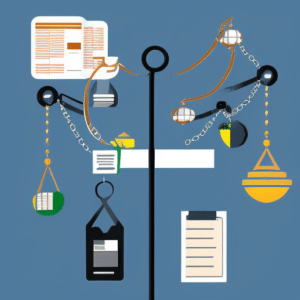Crypto transactions can seem daunting, especially if you’re new to the blockchain. But don’t worry—it’s not as difficult as it seems. With the right protocols and procedures in place, crypto transactions can be made safe and reliable.
In this article, we will go over four key steps that Web3 companies can take to secure transactions on the blockchain.
The Web3 Research Institute is reader-supported. When you buy through links on this site, we may earn a commission at no cost to you.
Step 1. Implement Secure Protocols
The first step in making sure crypto transactions are safe and reliable is implementing secure protocols such as HTTPS, encryption algorithms, and two-factor authentication.
These protocols help to ensure that data is transmitted securely over the internet and cannot be intercepted by malicious actors who might want to steal your information or funds.
Additionally, these secure protocols help protect your information from being hacked or stolen by cybercriminals.
Step 2. Develop Standards for Cybersecurity Practices
In addition to implementing secure and reliable protocols, it is important to develop standards for cybersecurity practices in the industry.
This involves establishing guidelines for companies that are working with cryptocurrencies so that they adhere to best practices when it comes to securing customer data and funds.
Doing so will help to ensure that everyone is held accountable for their actions and has the incentive to keep customer data safe and secure.
Step 3. Adopt a KYC Process
Another way of making crypto transactions safer and more reliable is by adopting a KYC (Know Your Customer) process. This process involves verifying a user’s identity before allowing them access to certain features of a website or platform.
By verifying identities upfront, companies can reduce the risk of fraud or money laundering activities taking place on their platforms.
Step 4. Create Consumer Protection Mechanisms
Finally, it is important for companies working with cryptocurrencies to create consumer protection mechanisms to ensure that users are not taken advantage of when using blockchain technologies.
This could include providing resources such as dispute resolution services or offering refunds in case of errors or fraudulent activities taking place on their platform.
Final Thoughts
Making crypto transactions safe and reliable may seem like a daunting task. But with the right steps in place, it can be done!
By implementing secure protocols, developing standards for cybersecurity practices, adopting a KYC process, and creating consumer protection mechanisms, companies can make sure that customer data remains safe while still providing an efficient service that meets customer needs.
Further Reading
1. Casey Newton, “Three Things Web3 Should Fix in 2022,” January 28, 2022
2. Dan Olson, “Line Goes Up: The Problem with NFTs,” January 21, 2022
Related Articles

Why Crypto Regulation Is Needed
In this article, we explore why regulation is needed to minimize the risks of cryptocurrencies and the steps that regulators can take.

Are Crypto Rug Pulls Illegal?
This article explores what crypto rug pulls are, whether they are illegal, and how to regulate them.

Healthcare Cryptocurrencies
This article discusses what healthcare cryptocurrencies are, how they can be used, and the 10 most promising projects today. Learn more about this $300 million industry!
